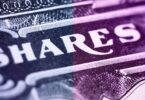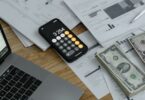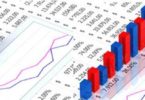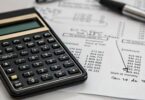Inflation represents:
(a) fall in the price level
(b) increase the value of money
(c) decrease the value of money
Which is the slowest inflation?
(a) Walking
(b) running
(c) Creeping
(d) moderate
Inflation due to an increase in the price of industrial products is known as:
(a) Pricing power
(b) Sectoral
(c) Profit
Cost–push inflation arises due to
(a) Rise in wages
(b) Rise in profit
(c) Rise in the prices of raw materials
(d) All of the above
Related: what is a Bank Cheque?
Who said inflation is too much money chasing too few goods?
(a) Coulbourn
(b) Keynes
(c) Friedman
(d) Samuelsson
What is the most common indicator of inflation?
(a) The Fisher effect
(b) The Phillips curve
(c) Core Price Index
(d) Consumer Price Index
The oil price rise is an example of __ inflation
(a) Sectoral
(b) Demand pulled
(c) Development
(d) Pricing power
The rate of inflation for walking is:
(a) between 3 to 10%
(b) below 3 %
(c) More than 10%
(d) More than 3%
‘Stagflation’ is a situation that the economy faces
(a) Inflation
(b) Stagnation
related: Excel quiz
Demand inflation is due to:
(a) cost hike
(b) excess demand
(c) excess cost
Which is not a feature of inflation?
(a) long term process
(b) state of disequilibrium
(c) dynamic in nature
(d) non-monetary phenomenon
Inflation is a situation where
(a) Prices are falling
(b) Value of money is falling
(c) Value of money is rising
Cost-push inflation can be controlled mainly by
(a) Fiscal policy
(b) Monetary policy
(c) Administrative policy
Related: Finance quiz
Deflation means:
(a) falling price level
(b) rise in the price level
(c) increase the value of money
In the case of ‘creeping inflation,’ prices are rising at
(a) Less than 3% per month
(b) Less than 3% per annum
(c) Around 5% per month
(d) Around 5% per annum
What is Disinflation?
(a) a slight decrease in prices
(b) slow increase in prices
(c) high increase in prices
(d) no increase in the prices
Expand PPI
(a) Purchaser Price Index
(b) People’s Price Index
(c) Producer Price Index
(d) Primary Price Index
The price rise every second is referred to as __ inflation.
(a) Running
(b) Galloping
(c) Walking
(d) Hyper
related: Maths quiz questions
When prices of only a few commodities rise, it is called
(a) Sporadic
(b) suppressed
(c) open
(d) creeping
The term Stagflation was coined by:
(a) Samuelson
(b) Iain Macleod
(b) Keynes
Which of the following is/are the easiest way(s) to handle economic inflation?
(A) Increase the money supply in the economy.
(B) Curb the money supply in the economy,
(C) Increase the credit inflow in the economy.
(D) Curb the credit inflow in the economy.
(a) Only (A) and (C)
(b) Only (B) and (D)
(c) Only (A)
Related: International trade test questions and answers
Demand-pull inflation may be caused by:
(a) An increase in costs
(b) A reduction in interest rates
(c) A reduction in government spending
(d) An outward shift in aggregate supply
What is the cause of inflation?
(a) If the money supply increases.
(b) If the production rate falls.
(c) If money supply increases and production falls.
(d) Both money supply and production decrease
What is cost-push inflation?
(a) Increasing money supply
(b) Increasing indirect tax
(c) Population increase
(d) expenditure increases unnecessarily
Which of the following is an effect of inflation?
(a) Erosion in purchasing power
(b) Affects the relative price of goods
(c) Increase in inequality of income
(d) All the above
Related: debenture quiz
Inflation:
(a) Always reduces the cost of living
(b) Always reduces the standard of living
(c) Reduces the price of products
(d) Reduces the purchasing power of a currency
What does inflation imply?
(a) Rise in the budget deficit
(b) Rise in prices of consumer goods.
(c) rise in the money supply.
(d) Rise in the general price index
What shows the inverse relationship between inflation and unemployment?
(a) Wage-price spiral
(b) CII
(c) The Phillips curve
(d) cost-push factor
How can inflation be checked temporarily?
(a) Increase in money supply
(b) Decrease in money supply
(c) Increase in wages
(d) Decrease in Tax
Inflation is the state in which __
(a) The value of money decreases
(b) The value of money increases
(c) The value of the money increases first and then decreases
(d) The value of money decreases first and increases later
Which is not a type of inflation?
(a) Demand-pull
(b) Growth-push
(c) Cost-push
(d) Core
Related: mcq of business analysis
Because of trade (and imports), inflation
(a) increases
(b) decreases
(c) moderates
(d) disappears






